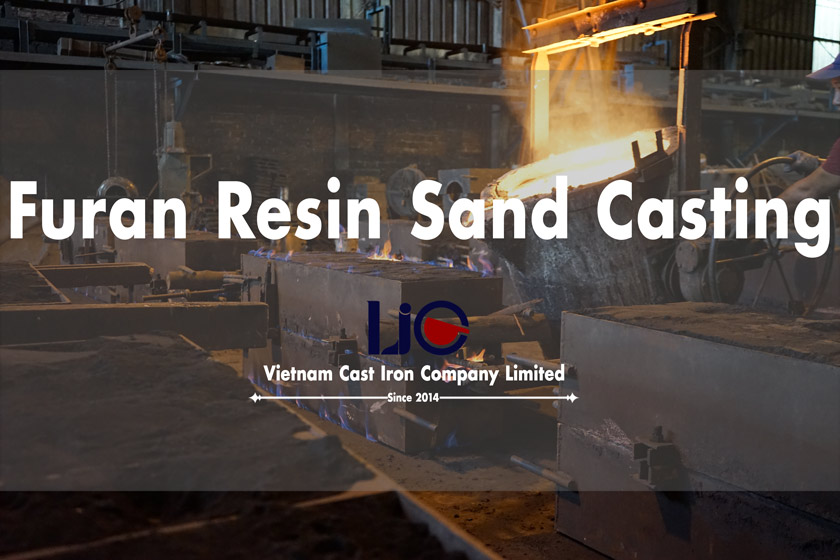Furan resin sand casting is a no-bake sand mold process, which furan resin plays a role as a bonding agent. This molding technique maintains pretty excellently in casting good quality and smooth surface finish. Whereas, some limitations are high cost and high raw material requirements.
Nowadays, numerous techniques are applied to process cast metal products. Some common names can list down such as green sand molding, lost foam casting, investment casting, permanent mold casting, etc.
Continue series of the blog of molding technology, Vietnam Cast Iron introduces a popular and widely applied method in foundries which names furan resin sand casting.
Stay with us to get more knowledge about what this process is and how it widely applicable in the metalworking industry.
What is Furan resin sand casting?
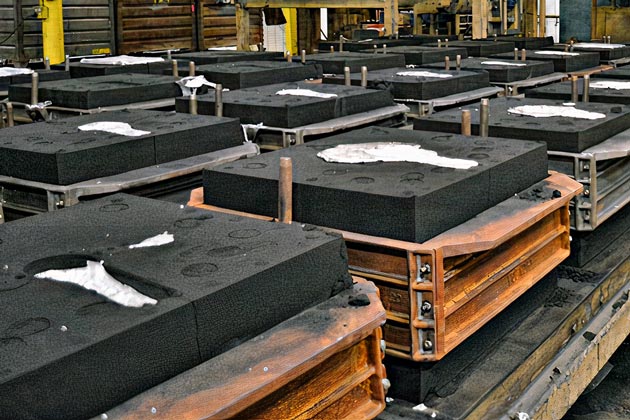
Furan resin sand casting is a molding process. This method uses furan resin as a bonding agent and mixes with Catalyst in a suitable proportion to produce sand mold.
The mixing ratio of furan resin binders for casting groups is different depending on the mas of the castings mass.
| The casting mass | Furan Resin (%) | Catalyst (%) |
|---|---|---|
| The casting below 300kg | 0.70 – 0.85 | 35 – 45 |
| Casting from 300kg – 2000kg | 0.85 – 0.96 | 40 – 45 |
| Casting over 2000kg | 0.96 – 1.3 | 45 – 55 |
Concerning this technique, the sand mold is self-harden. It can concrete at the room temperature.
The furan process helps the mold to solidify easily and creates products with a highly polished surface and good quality.
The raw material
The raw material of this method includes sand, furan resin, solidification agent, and annexing agent.
Regarding to the sand requirement, the content of SiO2 should be high, the content of mud and the value of acid should be low.
With respect to the furan resin, it is considered few or without nitrogen based on the technique demand and the structures of the metal castings.
About solidification agent, generally, we should use organic sulfuric acid solution.
Finally, adding some annexing agents can improve the property furan resin self-hardening sand; increase the intensity of resin sand.
What is furan resin?
In Furan casting technology, furan resin plays the most important role as the binder for sand casting.
Furan resin is a polymer compound with the ingredients: 75% Furfuryl alcohol + 11% Formaldehyde + 9% Ure + 5% Water.
The ratio of the two components of Formaldehyde and Ure will affect the solid time and durability of Furan mixtures. Whereas, Furfurylalcohol will affect the heat-resistant properties of the mixture.
The chemical formula of the furan resin:
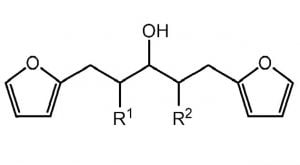
The following table is the phiysically properties of the resin sand:
| Properties | Firgure |
|---|---|
| Molecular mass | 96.08 |
| Viscosity | 10-20 cps |
| Boiling temperature at 101.3 Kpa (1atm) | 161.7̊C |
| Freezing temperature | -36.5 ̊C |
| Density | 1.1-1.15 g/cm3 |
| Nitrogen content (N) | max 2.5% |
| Water content | max 5% |
| The life span | 9 months from date of manufacture at room temperature. If stored at 20 degrees C shelf life up to 12 months. |
The cost of Furan resin is classified based on the nitrogen content and the percentage of water in the resin. The best water content in plastic is <3%; Nitrogen content <2.5% for cast iron, and <0.8% for steel casting.
The more water content is, the weaker the mold mixture performs. It also increases plastic use and generates gas in the molding process. To limit nitrogen gas generation, it is imperative to use a paint layer for mold to prevent gas from entering the casting. Consequently, this will increase production costs and then increase casting costs.
Additionally, the high nitrogen content causes the casting to appear porous surface defects.
Therefore, to assess the quality of Furan resin it is necessary to control the amount of water and nitrogen present in the resin.
What is the process of furan resin sand casting?
Furan casting technology uses high-precise mechanical processing machines which are synchronous and automatic lines to make molds for the castings.
As other mold casing methods, the pattern is designed at the beginning of the furan resin sand casting process.The materials of a pattern can vary from wooden, plastics to aluminum. In which aluminum is the most expensive material however it can guarantee the surface quality of the product.
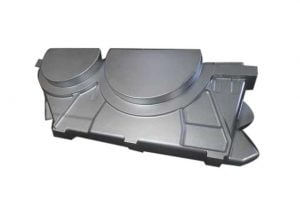
After the pattern-making step, the resin sand is mixed by sand treatment equipment and loads into the flask which contains the pattern. The sand is pressed and make as solid as possible by the worker.
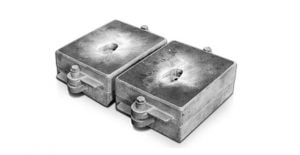
After that, the sand mold will be covered a type of alcohol-based coating and burn out until it is solid. As a result, a hard mold will be created.
Next, the molten metal is poured into the mold. When the casting is solid, it is removed from the mold and goes through the sandblasting process to clean the remaining sand.
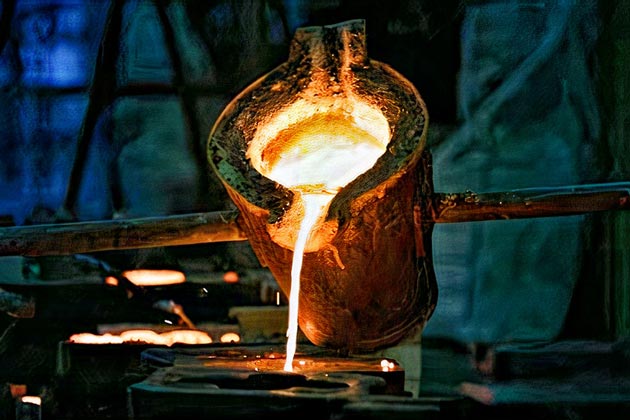
Finally, roughcasting is completed. If it needs any further machining, then these rough castings will be taken other additional processes.
What is Advantage of furan resin sand casting?
Furan casting has unique advantages in comparison with other mold casting methods.
- Firstly furan technique is excellent by producing castings with smooth surface and good appearance.
- High precise and fewer defects.
- The sand mold is dried under the temperature, so it saves time and labor for production.
What is limitations of furan resin sand casting?
Although maintaining excellent advantages, this method also remains some limitations.
- Furan casting applies high technologies and advance lines into production so the manufacturing cost is expensive. Hence the price per product is higher in comparison with other methods.
- It has high requirement for the raw materials.
- Another weakness of furan resin sand casting is that it cannot apply to produce steel casting due to its poor gas permeability.
- It creates concerns about the environmental issues.
Application of furan resin sand casting
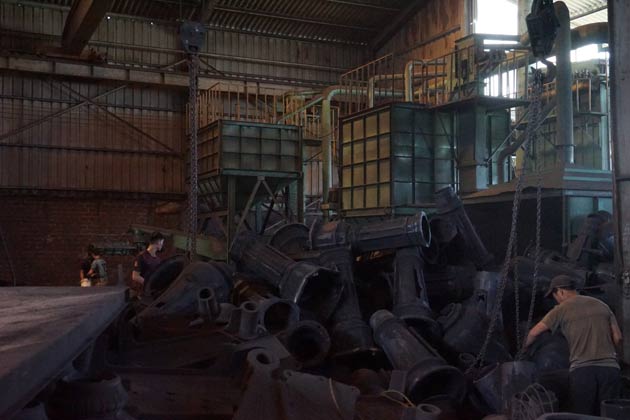
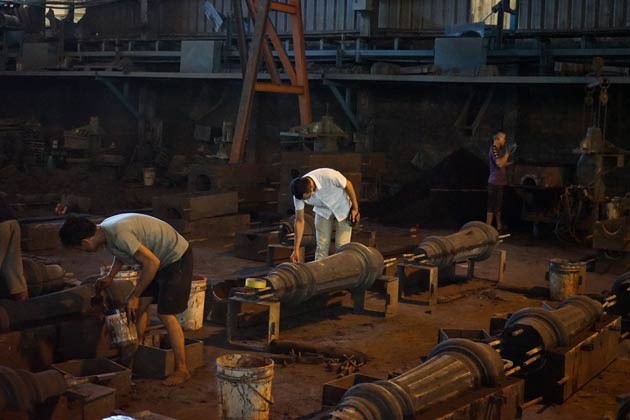
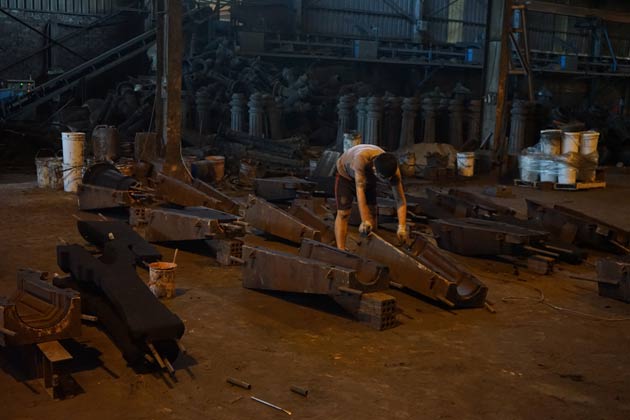
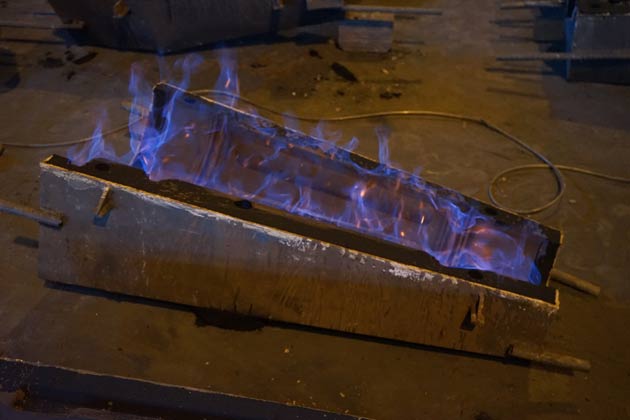
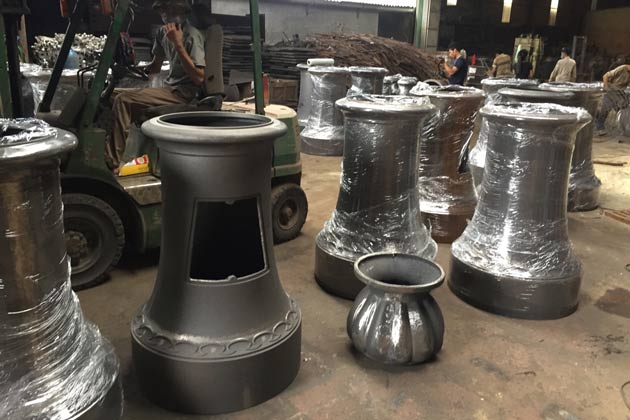
Except for some disadvantages, with the outstanding advantage as listed above, Furan resin sand casting technology is applied commonly in foundries to cast complex products, or big size products.
Furan molding is suitable for casting cast iron, ductile iron, steel, steel alloy, etc. from medium size to large size.
Furan resin sand technology in Vietnam
In Vietnam, Furan casting is widely used in foundries especially when the casting requires high precise and smooth surface finish.
At Vietnam Cast Iron, the furan process is also commonly used for high-required products ranging from the lamppost, pan support, gas burner, cast iron bench, cast iron urn planter, cast iron pump, etc. depending on customer’s needs.
Casting products by Furan technology of Vietnam Cast Iron have been trusted and highly appreciated by customers for quality, progress, and competitive price.
All of our metal casting products are strictly controlled by criteria during the manufacturing process, including:
- Control the raw materials.
- Analysis and inspection of chemical composition at the furnace.
- Check the temperature before pouring.
- Mold strength test;
- Check for defects;
- Hardness test.
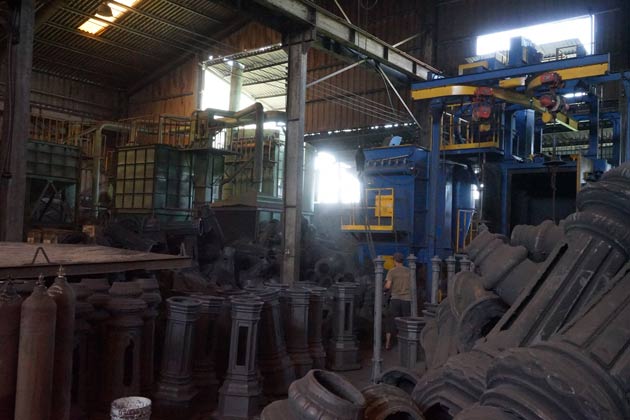
Above are the main characteristics of the furan resin sand casting. Summarily, we have gone through the definition; the casting process; the advantages and limitations; and application of the furan casting.
Summing up, the furan resin sand casting is no-bake sand mold process, which furan resin plays a role as a bonding agent. This molding technique maintains pretty excellently in casting good quality and smooth surface finish. Whereas, some limitations are high cost and high raw material requirements.
Vietnam Cast Iron is the world-class casting metal manufacturer. Our OEM products are mainly made from cast iron, ductile iron, steel, and aluminum; and processed by three main techniques that are furan resin casting, green sand casting, and lost foam casting.
Browse our category to see our casting ability. Also, contact us to get a quote for your project.
Contact information
- Company: Vietnam Cast Iron Co.Ltd
- Address: Lai Xuan, Thuy Nguyen District, Hai Phong city, Vietnam
- Email: [email protected]
References:


